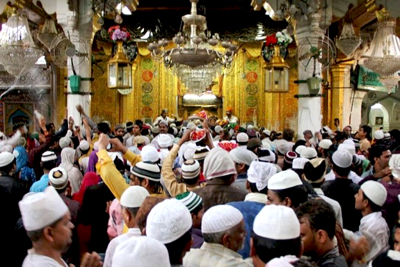New Delhi, Jun 13: Loss of smell or taste has been added to the list of COVID-19 symptoms, according to the revised clinical management protocols released by the Union Health Ministry on Saturday.
The ministry said that coronavirus-infected patients reporting to various COVID-19 treatment facilities have been reporting symptoms like fever, cough, fatigue, shortness of breath, expectoration, myalgia, rhinorrhea, sore throat and diarrhea.
They have also complained of loss of smell (anosmia) or loss of taste (ageusia) preceding the onset of respiratory symptoms.
Older people and immune-suppressed patients in particular may present with atypical symptoms such as fatigue, reduced alertness, reduced mobility, diarrhoea, loss of appetite, delirium, and absence of fever, the ministry said.
Children might not have reported fever or cough as frequently as adults.
The US's national public health institute, the Centers for Disease Control and Prevention (CDC), had in early May incorporated "a new loss of taste or smell" in the list of COVID-19 symptoms.
According to the data from Integrated Health Information Platform and Integrated Disease Surveillance Programme, portal case investigation forms for COVID 19 (n=15,366), the details on the signs and symptoms reported are (as on June 11), fever (27 per cent), cough (21 pc), sore throat (10 pc), breathlessness (8 pc), Weakness (7 pc), running nose (3pc ) and others 24 pc.
According to the health ministry, people infected by the novel coronavirus are the main source of infection.
Direct person-to-person transmission occurs through close contact, mainly through respiratory droplets that are released when the infected person coughs, sneezes, or talks.
These droplets may also land on surfaces, where the virus remains viable. Infection can also occur if a person touches an infected surface and then touches his or her eyes, nose, or mouth.
The median incubation period is 5.1 days (range 2–14 days). The precise interval during which an individual with COVID-19 is infectious is uncertain.
As per the current evidence, the period of infectivity starts 2 days prior to onset of symptoms and lasts up to 8 days.
The extent and role played by pre-clinical/ asymptomatic infections in transmission still remain under investigation.






Comments
I am sure this Dargah chief will allow shetering cows in his Dargah to make Hindus happy. let this Muzawar also allow cows to stay in his house as guests which will definately give him lots of ad and will be famous.
Mone... Moodbidri.... What do you say about this statement from The Soofi Dargah worshiper....
If prophet is against beef....good...but why should muslims protect them????????
Dhurga is also against Islam...could you stop cheating????
Who will believe even if Muslims are protecting cows,
The trend is, if Muslim have a cow for Milking purpose, Bajrangis will attack on the pretext of cow slaughter
If Muslim is having a cow for agriculture purpose, Banjrangis will attack on the pretext of cow slaughter
Cow is not the cause, but, they just need a reason to attack Muslims,
If the Cow problem is solved, then they will come up with Bakri reason, then Murgi reason, then Machli reason, Its never ending story till RSS is alive
This program is sponsored to you by...modees sangheez.....what has the mushriq Sarah chief to say about baqarah and adhaa?.....
ohh my god this person doesnt know Prophhet SAW said there is no place for Shirk and it is Haram and this guy in his life he is done full of Shirk, Mr. Zainul you are not a right person to give any commmnts without Hadith Quote, better you Shut your mouth
there is no impotant place for dargha in islam
Hey dargaparasthi
Muslims should not protect darghas,
prophet is against darghas.
Add new comment